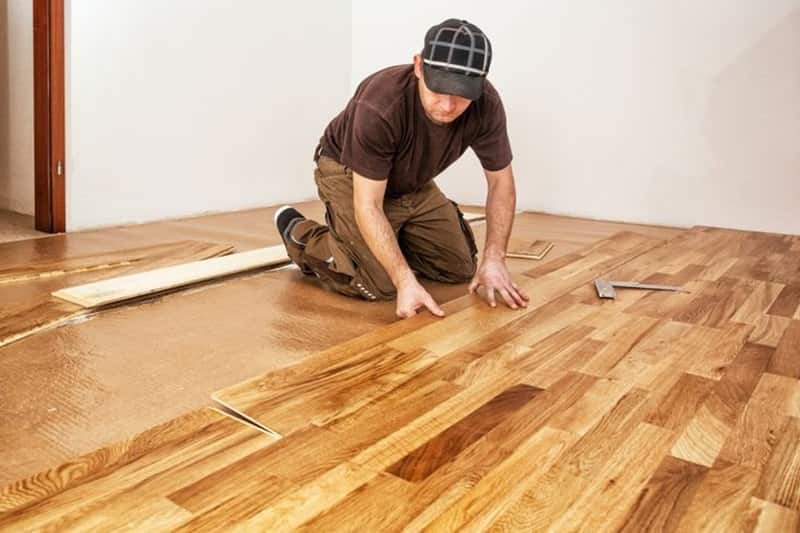Vinyl flooring has gained immense popularity in recent years due to its durability, affordability, and wide range of design options. However, one common issue that homeowners may encounter is vinyl flooring not laying flat. This problem can be frustrating and affect the overall appearance and functionality of the floor. In this article, we will explore troubleshooting tips to help you resolve this issue and ensure your vinyl floor lays flat.
What causes my Vinyl floor not laying flat
Before diving into the solutions, it’s crucial to understand the potential causes of vinyl floors not laying flat. These causes can include:
1. Subfloor issues
Uneven or damaged subfloors can cause the vinyl to buckle or warp, preventing it from lying flat. Inspect the subfloor thoroughly for any irregularities, such as bumps, cracks, or gaps. Address any subfloor issues before proceeding with the vinyl floor installation. Level out the subfloor using a self-leveling compound or sand down high spots. Repair any cracks or gaps with appropriate filler material to create a smooth surface for the vinyl flooring.
2. Improper installation
If the vinyl floor was not installed correctly, it may not adhere properly or have the necessary room to expand and contract, resulting in an uneven surface. Ensure that the vinyl flooring is installed following the manufacturer’s guidelines and using the recommended adhesive. Pay attention to the recommended temperature and humidity conditions for installation. Use a notched trowel to apply the adhesive evenly and avoid excessive or insufficient adhesive application. Additionally, make sure to roll the vinyl flooring with a flooring roller to ensure proper bonding.
3. Environmental factors
Extreme temperature fluctuations or excess moisture can cause vinyl flooring to expand or contract, leading to lifting or buckling. Maintain stable temperature and humidity levels in the room to prevent excessive expansion or contraction of the vinyl flooring. Avoid exposing the floor to extreme heat or cold, and use dehumidifiers or humidifiers to control moisture levels if necessary. Proper environmental conditions will help the vinyl floor stay flat and stable.
4. Inadequate acclimation
Vinyl flooring should be acclimated to the room’s temperature and humidity before installation. Failure to do so can result in expansion or contraction issues. Before installation, allow the vinyl flooring to acclimate to the room’s temperature and humidity conditions. Unbox the flooring and let it rest in the installation area for at least 48 hours. This process allows the material to adjust and reduces the likelihood of expansion or contraction issues.
Tips for Making Vinyl Floors Lay Flat
Now, let’s explore some effective troubleshooting tips to address the problem of vinyl floors not laying flat:
1. Allow for expansion and contraction
Vinyl flooring needs room to expand and contract with temperature and humidity changes. Leave a small gap, typically around ¼ inch, along the edges of the room to accommodate these movements. Use transition strips or moldings to cover the gaps and create a finished look. Ensure that the gap is consistent throughout the installation and that the flooring is not tightly against any walls or obstacles.
2. Weight distribution
If certain areas of the vinyl floor are not lying flat, try placing heavy objects, such as books or weights, on top of the affected areas. This additional weight can help encourage the vinyl to flatten out over time. Leave the weights in place for a few days to allow the vinyl to gradually conform to the subfloor and flatten out.
3. Heat application
In some cases, carefully applying heat to the vinyl flooring using a hairdryer or heat gun can help soften the material and allow it to conform to the subfloor more easily. Start by setting the heat tool on a low or medium setting and hold it a few inches away from the vinyl surface. Move the tool slowly over the affected area, focusing on the uneven spots. Be cautious not to overheat the vinyl, as excessive heat can damage it. Always test a small, inconspicuous area first to ensure that the heat application does not cause any discoloration or deformation.
4. Seek professional assistance
If you’ve exhausted all troubleshooting options and your vinyl floor still won’t lay flat, it may be time to seek professional help. Flooring experts or professional installers can assess the situation, identify the underlying cause, and recommend appropriate solutions tailored to your specific flooring and subflooring conditions. They may have specialized tools and techniques to address complex issues and ensure a flat and stable vinyl floor.
Conclusion
Vinyl flooring that doesn’t lay flat can be a frustrating issue, but with the right troubleshooting tips, you can address the problem effectively. Evaluate and prepare the subfloor, ensure proper installation techniques, allow for expansion and contraction, and acclimate the vinyl flooring before installation.
Control temperature and humidity levels in the room, and consider applying weight or heat to problem areas if needed. If all else fails, don’t hesitate to seek professional assistance.
By following these tips, you can enjoy a beautifully installed vinyl floor that lays flat and enhances the overall aesthetics of your space.


